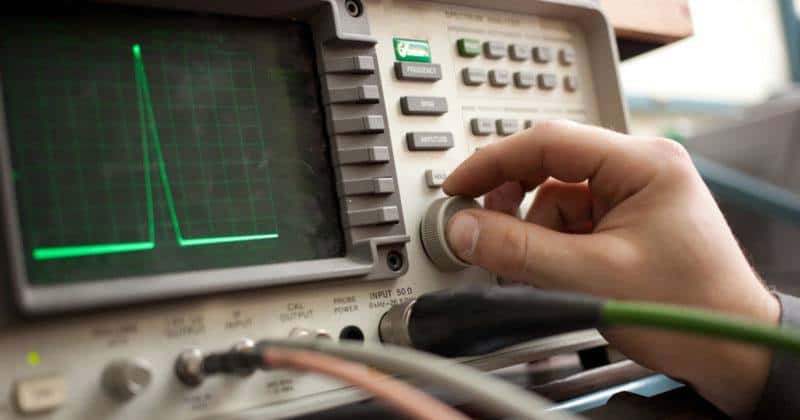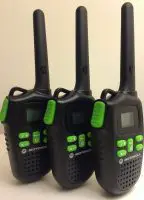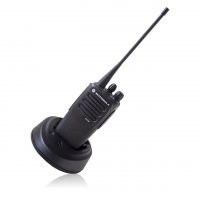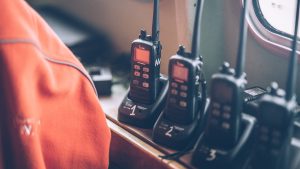Have you ever wondered what people were referring to when they talk about “ham radio,” or more specifically, what does ham radio stand for?
It is a rather strange name, and we found ourselves wondering about it too. What follows are the results of some research we did on the subject.
Table of Contents
What is Ham Radio?
Simply put, ham radio is another name used to describe amateur radio. Amateur radio is the use of equipment by individuals to broadcast and receive radio frequencies in some of the following ways:
- Communication
- Contesting
- Emergency Communication
- Experimentation
- Self-Training
The International Telecommunication Union definition of the word “Amateur” can be summarized as an individual interested in radio practice for personal interest and not for financial gain. The precise definition is located at the end of Article I of the General Regulations annexed to the International Radiotelegraph Convention (Washington, 1927) located here.
The use of the word “Amateur” or “Ham” is an important distinction, as amateurs are prohibited by law from accepting material or financial rewards for their hobby. This definition separates them from other types of radio broadcasters such as:
- Commercial Broadcasting Services (Radio Stations)
- Public Safety Services (Emergency, Fire, and Police)
- Two-Way Radio Services (Aviation, Maritime, Taxi)
Where Does “Ham” Come From?
This unique phrase for Amateur radio stems from the use of the word “ham” as a name given to amateur radio operators. The use of the name was first recorded in Electrician and Mechanic, April 1909 found here.
In the article, the frustration of the U.S. Navy with amateur operators using radio frequencies to talk among each other is discussed. A conversation between two operators is highlighted and includes one participant using “ham” to describe another amateur.
We discovered that the use of “Ham” was originally a negative term used to describe individuals among landline telegraphers. An article in McClure’s Magazine, January 1902 discusses “ham-fisted” operators and their errors here.
Many of the early amateur operators were former wire telegraph operators (radio was initially known as wireless telegraphy). The professional operators would suggest that amateur hobbyists were unskilled by describing them as a “ham.”
Professional broadcasters were not the only ones to use the word in a negative context. The Wikipedia article Etymology of ham radio points out that even amateurs used the term to describe each other in a disapproving way.
Early on though, a shift began that embraced the use of the term “Ham” in a more positive way. The Wikipedia entry mentioned above goes on to point out that during the same time period, publications dedicated to the hobby like QST would use the term in a positive way in describing a 16-year old operator in the article “Who’s Who in Amateur Wireless.”
By the early 1920s, the term was being used more generally and with less negativity attached to it. An example of this can be seen in a 1920 poem titled “I am the Wandering Ham.”
Where “Ham” Does Not Come From
As you can imagine, there are many falsehoods and myths that surround the origin of the word. We found a few interesting and quirky legends during our research that we feel are worth sharing.
Hertz-Armstrong-Marconi
In this myth, the term “HAM” comes from the first letters of the last names of radio pioneers Heinrich Hertz, Edwin Armstrong, and Guglielmo Marconi. The problem here is that Edwin Armstrong was unknown at the time the term was first being used.
Edwin Armstrong is most famous for inventing the FM radio. He was first known for his work with regenerative circuits, which he developed after his graduation from Columbia in 1913.
The Hammarlund Theory
Here, the Hammarlund Manufacturing Company was considered so influential in early radio that their products and customers were described with the nickname of “ham.” The problem here is that the company was not founded until 1910.
The Story Of The Station Called HAM
In this story, Albert Hyman was an amateur operator who became famous among amateurs after he appeared before Congress and helped to defeat a bill that would have ended amateur radio. Hyman and two others operated a station with the call letters HAM.
These individuals were supposed to be part of the Harvard Wireless Club. Members of the club at Harvard did research and were unable to find any record of Albert Hyman appearing before Congress.
Is Ham Radio A Dying Hobby? Are there still Ham Radio Operators?
Even though there are many cell phones and other forms of communication in today’s society, Ham radio is actually doing well! While you will find many other pastimes that are enjoyed by more people, we were surprised to find that there are approximately 700,000 operators licensed in the U.S. alone. Articles like Ham Radio Growing In The Age Of Twitter by NPR indicate a growth over the last three decades.
Do Ham Operators Need To Be Licensed?
Yes, an amateur radio operator needs a license to operate legally. In the U.S., anyone but a foreign representative may hold one of three licenses (which are good for ten years).
There is testing involved with all licenses issued to operators. The FCC has them categorized as follows:
- Technician License – Entry level for local broadcasting in North America
- General License – Allows some privileges on all bands and modes worldwide
- Amateur Extra License – Gives all operating privileges on all bands and modes
Does Ham Radio Cost A Lot As A Hobby?
The study materials and test for a basic license can cost less than forty dollars. It can cost less than 200 dollars to get a basic set of equipment that will allow you to start talking to other Ham operators. That isn’t a bad price, at all!





